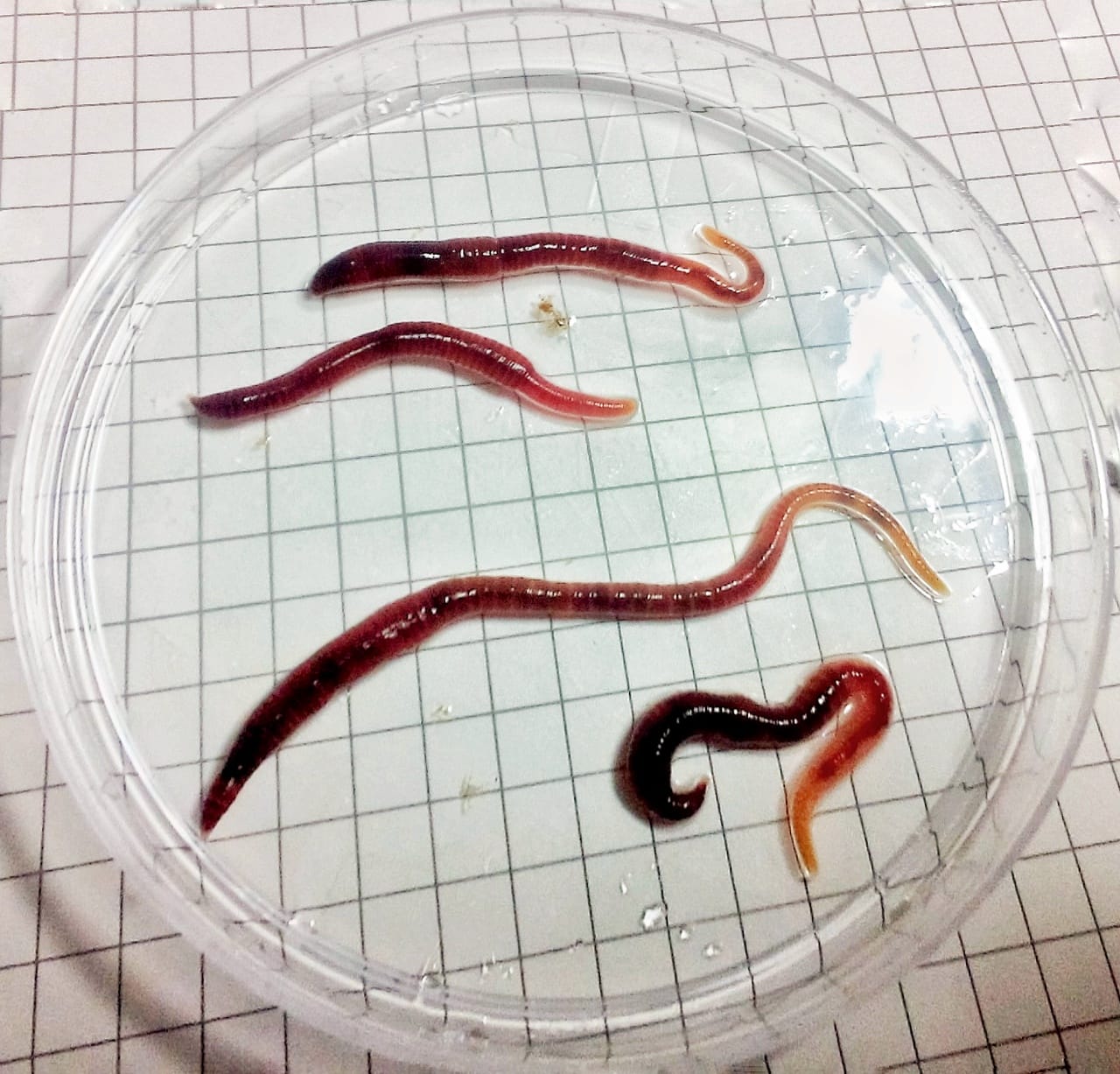Both bugs and worms usually give us the creeps. Bugs, or more scientifically put, bacteria can spoil food, infect wounds and cause fatal diseases when they get an opportunity to colonize our bodies sneaking past carefully laid out defense lines. They are also beneficial, adept as they are at performing useful enzymatic reactions, making merely edible food more palatable, providing powerful medicines and colorful pigments and the latest- even tweaking our mood swings! We only have to step a little away from this human centric viewpoint to appreciate the awe-inspiring diversity and numbers of microbes around us. A teaspoon of rich garden soil would weigh about a gram and could contain as many microbes as there are people in the world, estimates the knowledge project ! This inert looking bit of mud is the battleground of chemical warfare between species of bacteria, fungi and amoeba forming alliances while foraging for food, devouring each other and modifying the very nature of the soil through their chemical byproducts.
In my lab, we have been maintaining a culture of earthworms, to study how nerves may be regenerated. Worms, wriggling and writhing in the soil invokes a feeling of horror in many of us. We assume they will be smelly and slimy. We intuitively associate worms with the foulness of decaying matter. But even in the air-conditioned and minimally ventilated confines of the lab we never get the smell of decay from the earthworm trays. Plastic trays containing clumps of soil and hundreds of Eisenia fetida neither stink nor get covered in moss and putrid sewage like slush. Why is that? It is because the worms are excellent bug managers!
The first few days after a rotting leaf or banana peel lands in the tray, a variety of bacteria and fungi grow rapidly. In the absence of worms, a putrefying smell, layers of fungal mycelia and sometimes mushrooms erupt. But if earthworms are present, the soil contains a whole different group of bugs, hardly ten cultivable species of bacteria (unpublished results, courtesy: Surendra Singh Patel). We believe that the earthworms secrete small molecules that attract some bacteria while killing many others through the action of antimicrobial peptides and small molecules. They may even provide a sustainable solution for the antibiotic resistance genes found in soils, suggests a recent paper. This chemical management of the soil along with the physical process of their famous tilling action is a fascinating example of coexistence and collaboration.
But what happens when the sharp beak of a bird or the edge of a plough cuts a worm into pieces? Do the bugs get an upperhand, quickly infecting the worm and decomposing it? At least in the lab, the worm produces a foul smelling orange colored secretion immediately after the injury but we do not know the composition of this secretion. Gene expression studies carried out with the intention of studying how injury leads to regeneration inadvertently show us the production of some special peptides, resembling antimicrobial peptides. No one, to the best of our knowledge has explored the injured worm for a source of novel antibiotics.
When we tried to sequence the genome of the earthworm, we were careful to coax the worm into purging the soil in its gut, to avoid inevitable contamination by the microbes. But we were surprised to find several microbial sequences which we found to our surprise are known to dwell deep within the tissues of the worm. Some obligate symbionts, the most well known being Verminephrobacter, live in the convoluted tubules of the worm nephridia, specialized excretory organs embedded in the body wall. These microbes, which Hemant Suryavanshi and Manish Rai characterized in greater detail, presumably aid in the constant work of separating toxic compounds from the useful ones being absorbed through the skin or from the gut of the worm. Some other microbes that live in the body wall of the worm, as extracellular symbionts, have not been studied in any great detail.
As far as we can tell, through PCR based detection of the bacteria, the regenerated region of the worm does not harbour some symbiont species, notably Flexibacter. Is it possible that the bugs and worms have parted ways here? Or is it a temporary separation before the bacteria re-occupy their niche? If they do, how are they acquired? By repeatedly cutting and regenerating the worms, could we generate worms devoid of some of their resident bugs, like antibiotics can. Since some Flexibacter species are pathogens of fish, I wonder – would the worms be better off without their bacterial baggage?
For the moment, I must firmly shut the door on these meandering thoughts and tame my mind to focus on the gene networks that lay new tissues – nerve, muscle and blood into the regenerating regions of the worms. But perhaps someday…
Cover picture credit: BP Lab
Beena Pillai received her early scientific training as a microbiologist and now studies gene regulation in the neural system using diverse models- zebrafish, earthworm, mice and cultured cells to understand the molecular mechanisms underlying neurogenesis, neural cell differentiation and neurodegeneration.


